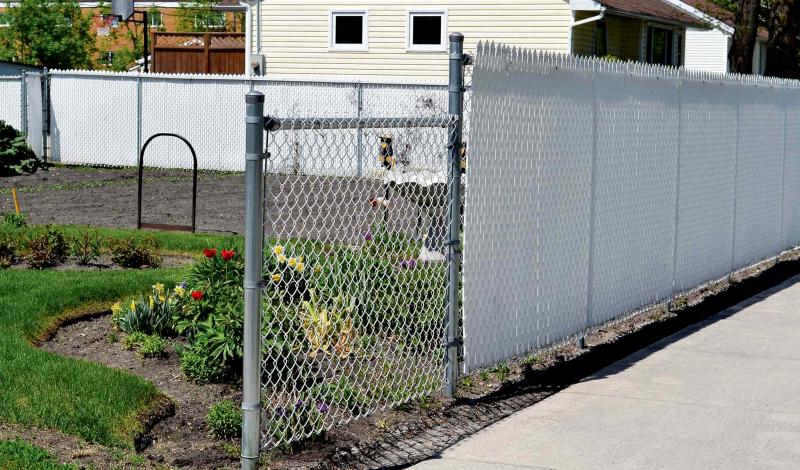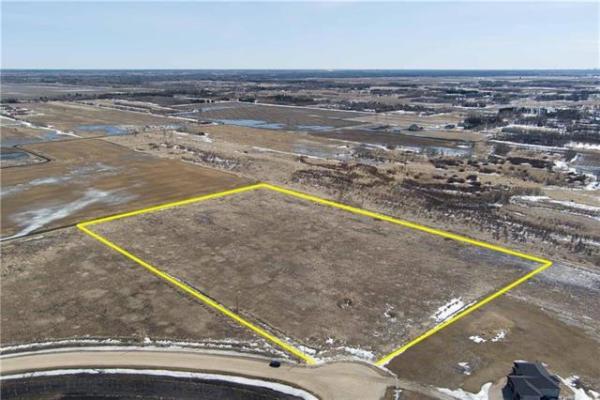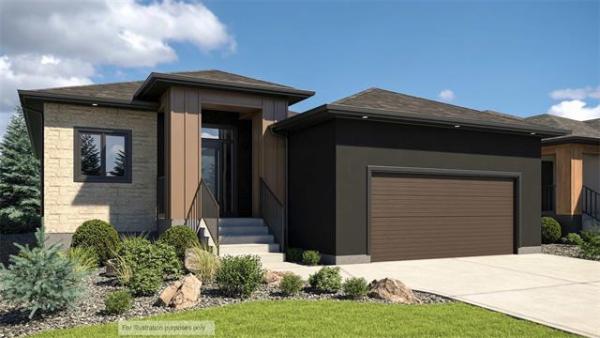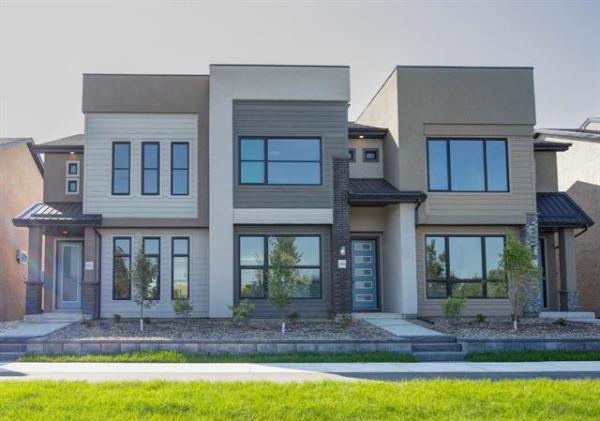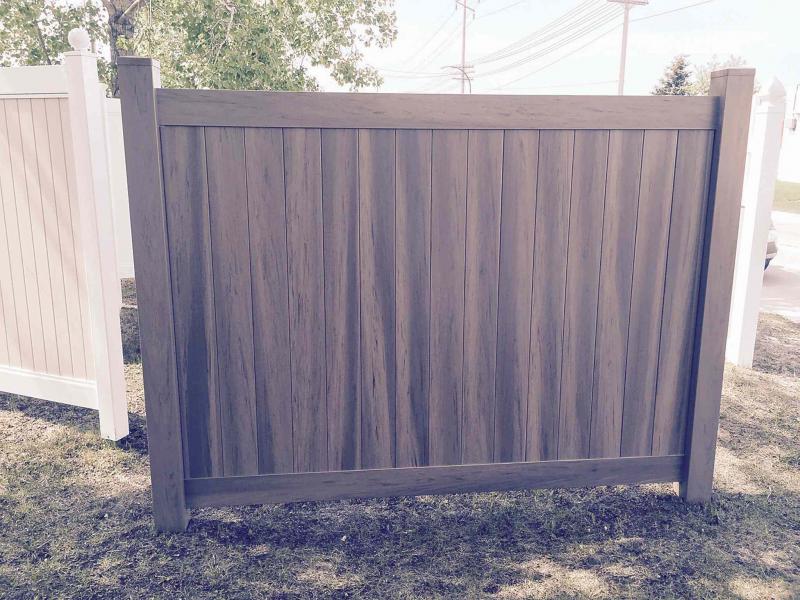
I received feedback recently from readers concerning my fence column of May 9. One gentleman wanted to know why I hadn't included PVC or polymer fences in the article. Another said the information I provided on chain-link fences was out of line with his experience with the product.
As to the PVC query, there was not room in the column to cover all the fencing materials available. And, as I tend to be leery of some plastic materials because of their long breakdown time in landfills, I left the topic of polymer fences to the last, a disservice to one reader and, perhaps, others.
In the interim, here is what I've learned about PVC yard dividers.
A spokesman for Windsor Plywood on Century Street said he stocks and sells white vinyl privacy (tight weave) lattice for $33 per 4'-by-8' sheet, compared to $60 per sheet for solid cedar privacy lattice. A similar PVC product is available from the company's Pembina Highway outlet for about $40 per 4'-by-8' sheet, also in white privacy. A tan colour is stocked at a similar price, and a khaki tone can be ordered in.
"Vinyl will outlast wood by many years, and lighter-toned PVC is less susceptible to fading than darker colours. It will not turn grey like non-maintained cedar or treated wood lattice," said a spokesman for the Pembina store.
One con of vinyl lattice is that the sheets need to be framed by 4"-by-4" wood posts and 2"-by-4" wood rails or a suitable alternative. Plastic sleeves that slide over the framing pieces are available. However, they are pricey and, for the most part, flimsy. Home Depot sells a two-pack 4"-by-4" post sleeve kit with caps for $95. Vinyl U-mould for attaching plastic lattice to wood posts and rails is widely available from big-box lumber stores.
One other thought: do not use untreated wood for framing because painted or stained pine or spruce will only last a few years before the elements and ground moisture trigger nature's decaying process. Treated wood or solid cedar are preferred options, but both need re-staining every two to three years to retain their colour. If you don't mind grey wood, you can skip this requirement. Keep in mind, however, regular staining does prevent moisture from entering and destroying wood cells and protects outer surfaces from ultraviolet rays. In my experience, treated wood outlasts solid cedar, but neither option will exceed the life expectancy of good quality plastic lattice.
Be aware Winnipeg bylaws and some provincial ones limit the height of a backyard fence to 6'-6" and the height of a front yard fence to 4', unless a variance is requested and granted. If you're a DIYer, it's a good policy to phone before you dig to ensure you don't cut an electrical line or rupture a gas or water pipe.
To enhance the curb appeal of homes, many owners opt for time-honoured white picket fences. In the case of vinyl, Home Hardware sells a traditional fence by Newbury comprised of 4'-high plastic pickets spaced about 3" apart. An eight-foot-wide section retails for $155, not including a 4"-by-4"-by-75" vinyl post kit at $53 each; gates are about $300 to $350, according to a spokeswoman for Home Hardware in Selkirk. Similar products by WamBam are available from Home Depot at comparable prices.
For those who wish to privatize a backyard with vinyl fencing, one of the best sources in Winnipeg I encountered was Prestige Vinyl Co. Ltd.
Dino Chouzouris of Prestige sells 6'-high-by-8'-wide white vinyl privacy fences for about $37 per foot uninstalled and $47 installed.
His products are DIYer-friendly. For example, a post pounder for driving 8' galvanized steel pipes into the ground to support the above-ground vinyl posts is available to rent. Alternatively, Chouzouris's company will install the steel pipes for homeowners and show them how to put together the first T&G vinyl panel so the DIYers can continue the job with confidence.
"Once the pipes are in the ground, two people can build an average backyard fence in a weekend, with time left to enjoy it," he said, adding he has some lovely new colours and colour-blends that retail for $45 uninstalled and $55 installed in colours and $49 uninstalled and $60 installed in blends.
Prestige Vinyl offers a lifetime transferable warranty on its products against any manufacturer's defects.
Go to prestigevinyl.com to access the company website.
-- -- --
James Buhler of Wallace and Wallace was the reader who contacted me about chain-link fencing in my May 9 column.
He felt the prices I quoted for installed chain link were high at $30 to $35 per lineal foot. As well, he debated my suggestion that the mesh fence is not DIYer-friendly.
"Depending on the height and type of chain link, we sell our Manitoba-made product for $11 to $15 per lineal foot, with an installation charge of $3 to $4 per foot on top. Residential orders can often be ready the same day or the next if custom gate sizes are required," said Buhler.
He added the company sells DIYer kits that include 100 lineal feet of 60" mesh, two end posts, line posts and all the hardware for about $1,200 plus taxes.
"The kits are ready to pick up and special tools that simplify and reduce the installation time are available at no extra charge to weekend DIYers," said Buhler, adding he believes chain link is the most economical fence on the market.
Other pros are Wallace and Wallace stocks chain fence in 36" to 144" heights, sells residential and commercial grades as well as all-colour systems, including powder-coated framework and vinyl-coated mesh in a variety of colours.
Moreover, with the addition of lattice inserts, it is possible to create a privacy fence at a significantly reduced cost compared to wood, Buhler said.
To view all the fencing material available at Wallace and Wallace, go to wallacefences.com.
A quick note on post holes: There are two generally accepted materials to set 4"-by-4" or larger fence posts in the ground. A 10" or bigger auger is used to bore to a depth of 4� feet. The bottom 6" of the hole is filled with gravel for drainage. The post is then set in the hole and either concrete or 3/4" limestone down is poured around it. The limestone should be solidly tamped at each one-foot level; the concrete should be worked with a trowel to ensure there are no voids in the mixture. Home Hardware sells a two-part polyurethane product that is mixed and then poured into the hole where it expands and sets. It takes one bag per hole, so at $19 per bag, this will not be economic, though it could save time and effort if only a couple of holes are to be filled.
davidsquare81@yahoo.com

